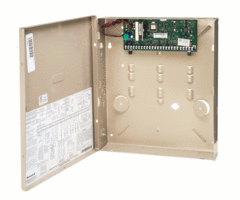Alarm Grid Video Recap: January 15th - 25th
Posted By Michael GorisHi DIYers! Its time for another Alarm Grid video recap. This time, we're covering the videos released from January 15th thru 25th. We have 10 new videos this time from Joe, Jorge and Jarrett. Check out our newest support videos, as we help you learn how to use your security system!
Adding a Siren to My LYNX Touch Panel Using The 5800RL
Joe shows users how to add a hardwired siren to a Honeywell LYNX Touch System by using the Alarm Grid LYNX-EXT Kit. This kit is built around the Honeywell 5800RL Wireless Relay, which allows the hardwired siren to communicate with the panel wirelessly. The kit includes everything a user needs, except for the actual siren and any necessary wiring. The kit is compatible with the LYNX Touch Systems, as well as the Honeywell VISTA Series Panels.
Using the SiX Programming Feature on a Honeywell Lyric
Jorge demonstrates the SiX Programming Feature used with a Honeywell Lyric Security System. This feature allows users to quickly and conveniently batch enroll Honeywell SiX Series Sensors with the Honeywell Lyric. All the user has to do is put the Lyric System into its SiX Programming Mode and power on the sensor to auto-enroll it. From there, the sensor's settings can be configured. If the sensor is new, then you can power it on by releasing the battery tab.
Making a Honeywell Panel Work With Alarm.com
Jorge talks about how some Honeywell Alarm Control Panels can be set up to work with the Alarm.com Platform. The only only Honeywell Panels that can do this are the Honeywell VISTA Series Panel. This is accomplished by adding an Alarm.com System Enhancement Module to the VISTA Panel. This module also doubles as a cellular communicator for the system. A good SEM for a VISTA System is the ADC-SEM110-VT-VZ. This communicator works with the Verizon LTE Network.
Disabling Auto-Stay Arming on a 2GIG GC3
Jarret goes through the process of disabling the Auto-Stay Arming feature on a 2GIG GC3 System. With Auto-Stay Arming enabled, the system will revert Arm Stay Mode when Arming Away if no entry exit zone is activated during the exit delay period. If a user wants to set their GC3 System to Arm Away Mode, they must either activate an entry/exit zone during the exit delay period or disable this option from within system programming.
Disabling Auto-Stay Arming on a 2GIG GC2
Jorge demonstrates how to disable Auto-Stay Arming on a 2GIG GC2 System. There are many cases where a user needs to set their system to Arm Away Mode to test their interior sensors. But a user might experience confusion when their system goes to Arm Stay Mode instead. The reason this is happening is because Auto-Stay Arming is enabled within system programming, and they are not faulting an entry/exit zone during the exit delay period.
Adding a Siren to My Lynx Touch Panel Using the Lynx-WEXT
Joe shows users how to add a hardwired siren to a LYNX Touch using the Alarm Grid LYNX-WEXT Kit. Unlike the LYNX-EXT Kit, which uses a wireless power relay, the LYNX-WEXT Kit provides a hardwired relay that connects with the panel through a physical connection. When an alarm occurs, the relay will direct power to the siren to have it activate. The relay will then cut siren power once the alarm is cleared to get it to stop sounding.
Disabling Auto-Stay Arming on a Honeywell Vista
Jorge demonstrates how a user can disable Auto-Stay Arming on a Honeywell VISTA Security System. This option is found from within panel programming. A user will need to enter programming using the system's Installer Code and provide the appropriate programming field. The default Installer Code is 4112. Once the Auto-Stay Arming option has been disabled, a user will be able to set the system to Arm Away Mode without having to activate an entry/exit zone.
Disabling Auto-Stay Arming on a Honeywell Lyric
Jarrett shows users how to disable Auto-Stay Arming on a Honeywell Lyric Controller. The purpose of the Auto-Stay Arming feature is to prevent false alarms when a user sets their system to Arm Away. If a user arms their system Away, but they don't activate an entry/exit zone, then it can be logically assumed that the user is still inside the building. In that case, it is very likely that user will activate an interior sensor and cause a false alarm. Auto-Stay Arming prevents this from occurring.
Creating an Automation in Apple HomeKit
Jorge shows the process for creating an Automation in Apple HomeKit. This is very important for Honeywell Lyric Security System users who want to have HomeKit Scenes activate when they perform certain functions on their panel. For example, a user might want to have a specific HomeKit device activate whenever they Arm their security system. The only way to do this is to create an action-based Automation in HomeKit and set the Lyric as the trigger.
Disabling Auto-Stay Arming on a Qolsys IQ Panel 2
Jarret walks users through the process of disabling Auto-Stay Arming on a Qolsys IQ Panel 2. Normally, a user would want to keep Auto-Stay Arming enabled so that a user does not accidentally cause a false alarm by setting their system to Arm Away when they meant to choose Arm Stay. But disabling Auto-Stay Arming can be very useful when testing, as the user will not have to open and close an entry/exit zone whenever they go to Arm Away.















